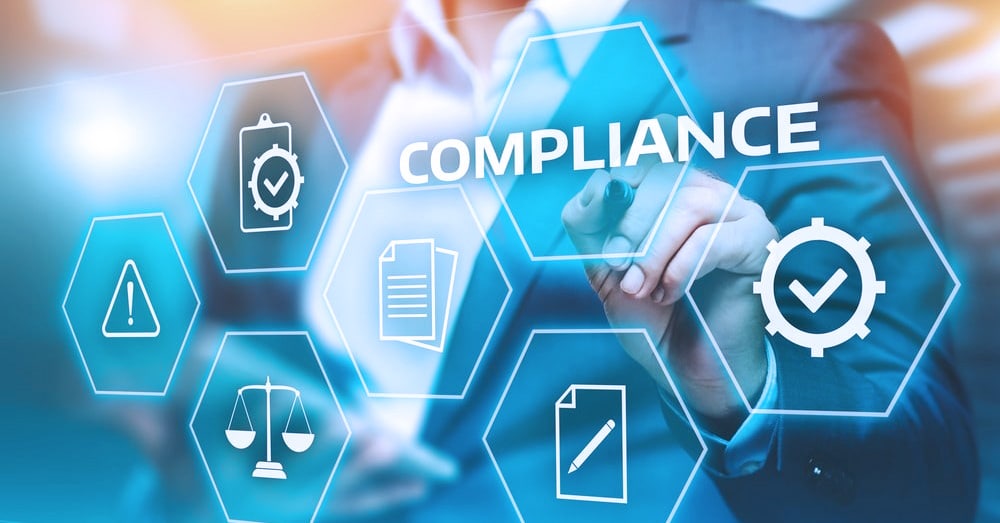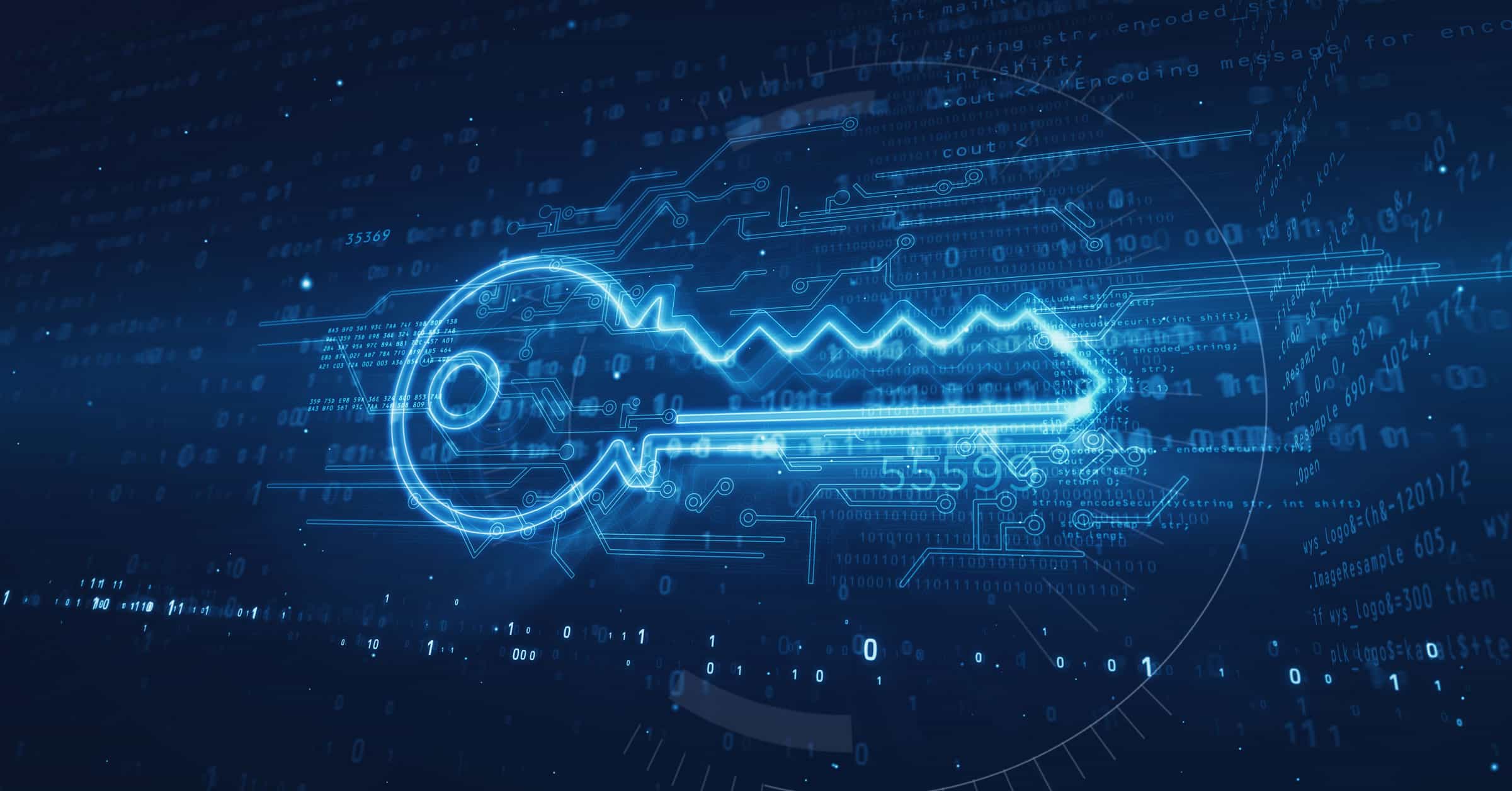In today’s digital age, organizations are increasingly vulnerable to cyber threats. With sensitive data being stored and shared online, cybersecurity has become a top priority for businesses of all sizes. One of the key components of a strong cybersecurity strategy is ensuring cybersecurity compliance, which refers to adhering to specific legal, regulatory, and industry standards that ensure data security and privacy.
Cybersecurity compliance is not just about implementing security measures; it’s about meeting the required legal frameworks and regulations to protect both your organization and its customers. In this article, we will explore how organizations can ensure they maintain cybersecurity compliance, covering essential compliance frameworks, implementation strategies, common challenges, and the benefits of maintaining compliance.
Key Takeaways
- Cybersecurity compliance helps protect data, mitigate risks, and avoid legal repercussions.
- Regular risk assessments and understanding relevant compliance frameworks are essential.
- Strong policies, employee training, and robust security measures are fundamental to compliance.
- Ongoing audits and monitoring are necessary to maintain continuous compliance.
- A culture of security within the organization plays a crucial role in ensuring long-term success in compliance efforts.
Understanding Cybersecurity Compliance
Before diving into how to ensure compliance, it is essential to understand what cybersecurity compliance means. Cybersecurity compliance refers to the process of ensuring that an organization meets the legal, regulatory, and ethical standards set to protect digital data and infrastructure from cyber threats. It encompasses a variety of standards, including those related to data protection, privacy, access controls, and network security.
Each industry and region may have different compliance standards, such as:
- GDPR (General Data Protection Regulation): This regulation applies to organizations that handle personal data of individuals in the European Union. It mandates strict data protection and privacy standards.
- HIPAA (Health Insurance Portability and Accountability Act): For organizations in the healthcare industry, HIPAA sets forth compliance standards to ensure the privacy and security of patient data.
- PCI DSS (Payment Card Industry Data Security Standard): This set of standards applies to businesses handling payment card information, ensuring proper encryption and access controls are in place.
- NIST (National Institute of Standards and Technology): NIST provides cybersecurity frameworks that organizations can adopt to ensure their systems are secure and compliant with government standards.
- SOX (Sarbanes-Oxley Act): This U.S. law regulates corporate governance and financial practices, including requirements for IT security and data integrity.
By adhering to these and other regulations, organizations can mitigate the risk of data breaches, loss of customer trust, and potential legal consequences.
Steps to Ensure Cybersecurity Compliance
1. Conduct a Risk Assessment
The first step in ensuring cybersecurity compliance is conducting a comprehensive risk assessment. Risk assessments help organizations understand potential threats and vulnerabilities in their network, data systems, and infrastructure. This process allows businesses to identify areas where compliance may be lacking or where further improvements need to be made.
- Identify critical assets: Identify which assets, such as sensitive customer data, intellectual property, or financial information, need the highest level of protection.
- Analyze risks: Evaluate potential threats that could compromise these assets, such as cyberattacks, system failures, or human errors.
- Evaluate vulnerabilities: Identify any weaknesses in your systems, such as outdated software, insufficient encryption, or lack of employee training.
- Determine impact: Assess the potential consequences of a data breach or cybersecurity incident. What would happen if a critical system was compromised or sensitive data was exposed?
2. Understand Relevant Compliance Standards
Once risks are identified, organizations must align their cybersecurity practices with relevant compliance standards. These standards often set out technical and procedural requirements that must be followed.
For example, if your organization operates in the healthcare industry, ensuring HIPAA compliance means implementing safeguards such as encryption, access control, and regular audits of data access logs. Similarly, if you are a business that processes payment card information, PCI DSS compliance would require you to secure payment systems and implement strong access controls.
Understanding the specific standards that apply to your organization is crucial. Some general guidelines to follow include:
- Review compliance frameworks: Study the compliance frameworks that are relevant to your industry and region. This could include international standards like GDPR or industry-specific frameworks like HIPAA.
- Consult experts: It may be helpful to hire consultants or compliance officers who are experts in the relevant laws and regulations.
- Create a compliance roadmap: Develop a clear roadmap outlining the steps needed to meet each standard, including deadlines and responsible team members.
3. Develop Strong Cybersecurity Policies and Procedures

Once you know what is required for compliance, it’s time to develop cybersecurity policies and procedures that address the specific needs of your organization. These policies should set clear expectations for all employees and ensure that security measures are in place at every level of the organization.
Key elements to include in your cybersecurity policies are:
- Access Control: Restrict access to sensitive information based on roles and responsibilities. Employees should only have access to the data necessary for their job functions.
- Incident Response Plan: Prepare an incident response plan that outlines how your organization will respond to a cybersecurity incident. This should include who to contact, how to contain the threat, and how to communicate with stakeholders.
- Data Encryption: Ensure sensitive data is encrypted both at rest and in transit. Encryption is a fundamental part of maintaining compliance in many frameworks.
- Employee Training: Regularly train employees on cybersecurity best practices, including recognizing phishing attacks, handling sensitive data securely, and following compliance protocols.
- Third-Party Risk Management: Ensure that third-party vendors who handle sensitive data comply with cybersecurity regulations. A third-party breach can often lead to compliance failures.
4. Implement Robust Security Measures
After policies are in place, organizations need to ensure they have the appropriate security technologies to protect their digital assets. Robust cybersecurity measures are critical in preventing unauthorized access, data breaches, and other cyberattacks.
These may include:
- Firewalls and Intrusion Detection Systems (IDS): Firewalls monitor and control incoming and outgoing network traffic, while IDS solutions can detect malicious activities.
- Endpoint Protection: Install endpoint protection on all devices, including computers, mobile phones, and other devices that access company data.
- Two-Factor Authentication (2FA): Implement 2FA for all users accessing sensitive systems to ensure an extra layer of security.
- Regular Patching and Updates: Keep all systems and software up to date with the latest security patches to mitigate vulnerabilities.
5. Monitor and Audit Compliance Regularly
Cybersecurity compliance is not a one-time activity; it requires ongoing monitoring and auditing to ensure that the organization is continually adhering to the necessary standards. Regular audits help identify gaps in your security posture and ensure that security measures are working as intended.
Key actions to monitor and audit include:
- Audit logs: Regularly review access logs and system activity logs to detect unauthorized access or anomalies.
- Compliance checkups: Schedule regular compliance reviews to verify that your cybersecurity practices are still aligned with evolving regulations.
- Vulnerability scanning: Continuously scan for vulnerabilities and fix any weaknesses in your systems.
6. Prepare for Cybersecurity Compliance Audits
Many regulations require periodic audits to assess whether your organization is in compliance with cybersecurity standards. It is important to be ready for these audits by keeping thorough records of all security measures, policies, and procedures.
- Documentation: Maintain detailed records of your cybersecurity policies, risk assessments, incident response plans, and employee training efforts.
- Review previous audits: If your organization has been audited before, review any findings or recommendations from the previous audit to ensure corrective actions have been taken.
7. Maintain a Culture of Security and Compliance
Finally, ensuring cybersecurity compliance is not just about technical solutions—it’s about fostering a culture of security within your organization. Employees must understand their role in maintaining cybersecurity compliance and take ownership of protecting sensitive data.
- Ongoing training: Provide continuous cybersecurity awareness training to employees to ensure they are up to date on the latest security threats and compliance requirements.
- Leadership commitment: Cybersecurity compliance must be a top priority for organizational leaders. Executives and managers should champion cybersecurity efforts to foster a culture of security across the entire organization.
How Can Your Organization Ensure Cybersecurity Compliance?
In an increasingly digital world, the importance of ensuring cybersecurity compliance cannot be overstated. As organizations collect, process, and store vast amounts of sensitive data, the risk of cyberattacks grows exponentially. Cybercriminals are constantly looking for vulnerabilities to exploit, and the consequences of a security breach can be severe, including financial losses, reputational damage, and legal ramifications.
Cybersecurity compliance is a key component in managing this risk and protecting both your organization and your customers. Compliance refers to adhering to specific legal and regulatory standards that govern how sensitive data should be managed, protected, and secured. Ensuring compliance is not just about meeting a checklist—it’s about building a proactive, long-term cybersecurity strategy that keeps evolving in response to new threats.
In this comprehensive guide, we will explore the critical steps your organization should take to ensure cybersecurity compliance, the benefits of doing so, the challenges involved, and actionable strategies to meet the required standards.
What Does Cybersecurity Compliance Involve?

Cybersecurity compliance involves meeting certain security standards that protect data, systems, and networks from unauthorized access and breaches. These standards vary depending on industry, geographic location, and the type of data handled. At its core, compliance requires organizations to put in place security policies, technologies, and processes that are in line with regulatory and legal requirements.
Different industries may require compliance with different frameworks. For instance, healthcare organizations must follow HIPAA to ensure patient data privacy, while businesses processing payment card information need to adhere to PCI DSS. Additionally, global frameworks like the GDPR impose strict guidelines on how companies that deal with European Union citizens’ personal data must secure that information.
Common Cybersecurity Compliance Frameworks
- General Data Protection Regulation (GDPR):
- GDPR is one of the most important data protection regulations globally. It mandates that organizations handling the personal data of EU residents must take extra measures to safeguard that data. Key principles include obtaining consent from individuals, ensuring data minimization, providing transparency in data usage, and implementing strong data protection mechanisms.
- Health Insurance Portability and Accountability Act (HIPAA):
- HIPAA applies to healthcare providers, insurers, and organizations that handle health-related data. It requires businesses to maintain privacy and security standards regarding patient data, including safeguarding electronic health records (EHR) with encryption, access control, and audit trails.
- Payment Card Industry Data Security Standard (PCI DSS):
- PCI DSS governs any organization that handles payment card information. It mandates a set of security controls to prevent payment card fraud, including encryption of data, access control policies, secure transmission methods, and regular vulnerability assessments.
- National Institute of Standards and Technology (NIST):
- NIST provides a framework for improving critical infrastructure cybersecurity across different sectors, from energy to government services. NIST’s guidelines are voluntary but widely adopted across industries to ensure robust protection of systems and data.
- Sarbanes-Oxley Act (SOX):
- SOX mandates that publicly traded companies in the U.S. establish controls to ensure the integrity of financial reporting. Part of this includes ensuring the security of financial data, preventing fraud, and maintaining an audit trail of all financial transactions.
Key Steps for Ensuring Cybersecurity Compliance
1. Conduct a Risk Assessment
Risk assessments are the foundation of a comprehensive cybersecurity compliance strategy. A risk assessment involves identifying potential security threats, vulnerabilities in your systems, and assessing the impact of a breach or incident.
Key elements of a risk assessment include:
- Asset Identification: Recognize which assets need to be protected. This could include customer data, intellectual property, financial records, or proprietary business strategies.
- Threat Identification: Determine possible threats, such as cyberattacks, natural disasters, or insider threats, that could compromise your assets.
- Vulnerability Identification: Identify system vulnerabilities, such as outdated software, insecure networks, or gaps in employee training, that could be exploited by attackers.
- Risk Analysis: Evaluate the likelihood and potential consequences of each identified risk. This helps prioritize which threats need the most immediate attention and resources.
2. Map Compliance Requirements to Internal Policies
Once the risks are identified, it’s crucial to map these risks to the relevant cybersecurity regulations that apply to your organization. Different frameworks have specific requirements, and you need to ensure that your organization’s cybersecurity policies are in line with these standards.
For example, under GDPR, you would need to include provisions for data encryption, access control, data retention, and breach notification. These measures ensure that customer data is stored and handled in a way that protects user privacy and adheres to legal requirements.
By aligning your internal policies with these regulations, you can guarantee that all your business processes adhere to necessary cybersecurity compliance standards. This also ensures that your employees understand their roles and responsibilities in maintaining data security.
3. Implement Strong Access Control and Identity Management
A key part of cybersecurity compliance is managing access to sensitive data. Ensuring that only authorized individuals have access to specific information is critical to preventing breaches and ensuring compliance.
Best practices in access control include:
- Role-Based Access Control (RBAC): Implementing role-based access limits the information available to individuals based on their roles within the organization. For example, HR staff should not have access to financial records.
- Least Privilege Principle: Employees should only be granted the minimum level of access necessary to perform their job functions. This limits the impact in the event of a security breach.
- Multi-Factor Authentication (MFA): Implementing MFA can add an extra layer of security by requiring users to verify their identity using multiple methods, such as a password and a one-time code sent to their phone.
4. Data Encryption and Secure Data Storage

Data encryption is a fundamental element of cybersecurity compliance. It ensures that even if data is intercepted by cybercriminals, they will not be able to read or use the information.
Key considerations for encryption include:
- Data at Rest: Encrypt sensitive data stored in databases, file systems, or backup systems. This protects data even when it is not actively being accessed.
- Data in Transit: Ensure that data being transmitted over networks is encrypted using secure protocols like SSL/TLS to prevent interception by attackers.
- Encryption Key Management: Proper management of encryption keys is critical. If encryption keys are poorly protected, they can be compromised, nullifying the effectiveness of encryption.
5. Employee Training and Awareness
Employees are often the weakest link in cybersecurity compliance. Phishing attacks, social engineering, and human error are some of the primary ways that security breaches occur. Ensuring that your employees are well-trained is crucial in preventing these types of incidents.
Cybersecurity training should include:
- Recognizing Phishing Attacks: Teach employees how to recognize suspicious emails or communication attempts from cybercriminals.
- Data Handling and Privacy: Employees should be trained on how to securely handle customer data and maintain privacy in compliance with data protection regulations.
- Incident Reporting: Encourage employees to report any security incidents or suspicious activity promptly so that mitigation strategies can be implemented quickly.
6. Regular Monitoring and Auditing
Cybersecurity compliance is an ongoing process, not a one-time effort. Your organization should continuously monitor its networks, systems, and policies to ensure compliance is maintained.
This includes:
- Continuous Vulnerability Scanning: Regular vulnerability scans help identify new weaknesses in your systems and applications. These scans ensure that your systems remain up-to-date with the latest security patches.
- Access Log Auditing: Monitoring and reviewing logs from access control systems can help identify unauthorized access or suspicious activities.
- Compliance Audits: Perform internal and external compliance audits to verify that your organization is adhering to all relevant cybersecurity regulations. These audits should be scheduled periodically and as needed.
7. Incident Response and Breach Notification
Despite best efforts, security breaches may still occur. A robust incident response plan is critical for containing any potential damage and maintaining compliance.
Your incident response plan should:
- Identify Key Stakeholders: Ensure that key team members, including cybersecurity professionals, legal teams, and executive leadership, are involved in the response process.
- Contain the Threat: Implement immediate measures to contain the breach and prevent further damage to systems or data.
- Notify Affected Parties: Many cybersecurity regulations require that affected individuals be notified of a data breach within a specified timeframe (e.g., 72 hours under GDPR).
- Document the Incident: Maintain detailed records of the incident, including the cause, impact, response efforts, and any lessons learned for future prevention.
Additional Considerations for Maintaining Compliance
1. Third-Party Vendor Management
Many organizations work with third-party vendors that may have access to sensitive data. It is essential to ensure that these vendors are also compliant with the relevant cybersecurity standards.
Actions to take include:
- Vetting Vendors: Before selecting a vendor, assess their cybersecurity practices and ensure they align with your compliance requirements.
- Contracts and Agreements: Include cybersecurity clauses in vendor contracts to hold them accountable for maintaining the appropriate security measures.
- Ongoing Monitoring: Regularly review vendor practices to ensure that they continue to comply with your organization’s cybersecurity standards.
2. Adapt to Changing Regulations
Cybersecurity regulations are continually evolving. As new threats emerge and new technologies are developed, the rules and guidelines governing cybersecurity are also updated. Organizations must remain agile and adapt their practices to align with these changes. Regularly reviewing industry publications, attending conferences, and staying in touch with cybersecurity experts can help keep your organization up-to-date on regulatory changes.
Also Read : What Are The Best IT Security Practices For 2025?
Conclusion
Ensuring cybersecurity compliance is a critical aspect of modern business operations. By following best practices like risk assessments, implementing strong security measures, and maintaining continuous monitoring and employee training, organizations can safeguard sensitive data and ensure compliance with legal and industry standards. Failing to comply can lead to severe consequences, including financial penalties and reputational damage.
FAQs
What is the difference between cybersecurity and cybersecurity compliance?
- Cybersecurity refers to the set of practices and technologies used to protect an organization’s digital assets. Cybersecurity compliance, on the other hand, involves adhering to specific regulations and standards that are designed to protect data and ensure privacy.
Why is cybersecurity compliance important?
- Compliance ensures that your organization is following industry regulations and legal requirements to protect sensitive data, avoid fines, and maintain customer trust.
What are the common cybersecurity compliance frameworks?
- Some of the most common frameworks include GDPR, HIPAA, PCI DSS, NIST, and SOX.
How can an organization stay compliant with evolving cybersecurity regulations?
- Organizations should stay informed about changes in regulations, continuously audit their systems, and update their cybersecurity policies and procedures as needed.
What happens if an organization fails to meet cybersecurity compliance?
- Failure to meet compliance can result in legal penalties, fines, reputational damage, and loss of customer trust.
Who is responsible for ensuring cybersecurity compliance in an organization?
- The responsibility typically falls on the Chief Information Security Officer (CISO), IT security teams, compliance officers, and executive leadership.
Can third-party vendors affect cybersecurity compliance?
- Yes, third-party vendors who handle sensitive data must also comply with cybersecurity regulations. Non-compliance by a vendor can affect your organization’s compliance status.




